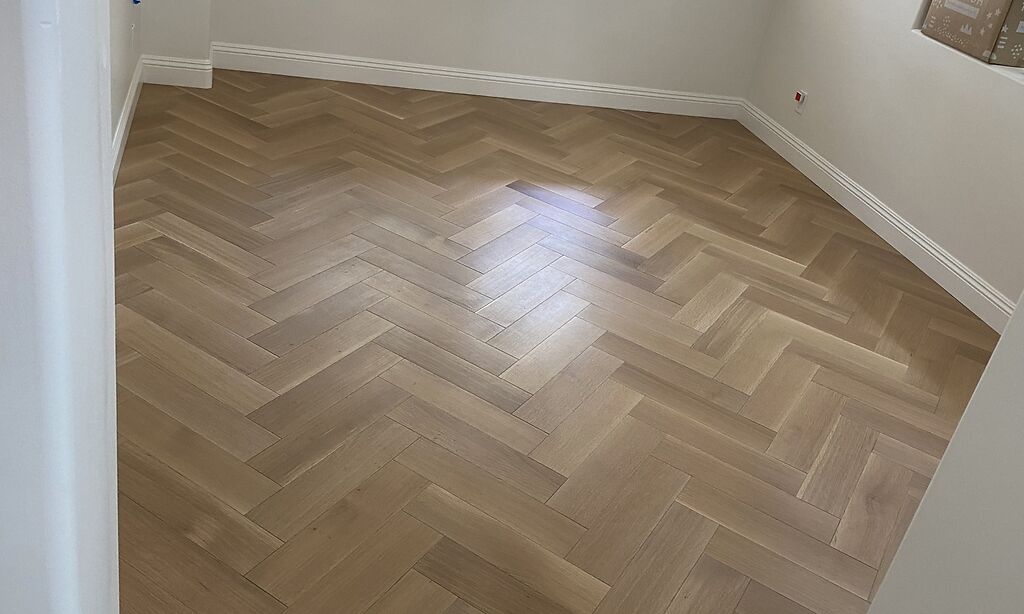Picking the right flooring option first time is important because it is a large, time-consuming and expensive job. It’s certainly not the kind of job that you'll want to do twice.
Although it would be a nice, simple option, you cannot have the same kind of flooring throughout the house, with each area having specific needs that often can't be met with just one material. Bathrooms require water-resistant and waterproof materials, such as ceramic or porcelain tiles. Kitchens require water-resistant/steam-resistant materials that are hardwearing and easy to clean. Bedrooms require softer, warmer materials that help to make the room a comfortable and safe one.
Take a look at some of these suggestions to ensure you're picking the right flooring for your home remodel:
Flooring to add value to your home
One of the best materials you can choose to add to your home remodel with the intention of raising value is hardwood. Some realtors even state that adding hardwood floors to homes can mean a return-on-investment of as much as eighty percent.
Flooring for high traffic areas
Tile flooring isn't a bad choice for areas of high traffic in a home, and it's also great for wet or damp areas, too. Strong, durable and hard-wearing, tiles of various materials can last a long time when they are installed properly. Unfortunately, heavy or sharp items can smash or crack tiles when dropped, though it’s easy enough to repair the odd tile here and there should they become damaged.
You could also look at vinyl for areas of high traffic, which can often be installed to mimic the look of other flooring types, such as hardwood,

Flooring for wet areas
Ceramic or porcelain tiles are the obvious choice when it comes to waterproof or water-resistant flooring for wet areas, such as the kitchen or bathroom. The latter is best for very wet spaces that are prone to dampness.
You do have other options, however. These include luxury vinyl tiles or planks, sheet vinyl flooring and sealed concrete. It is not recommended to have solid hardwood flooring in wet areas, and the same can be said for carpet, laminate flooring, bamboo flooring, linoleum (lino - tiles or sheets) and engineered wood.
Flooring for durability
If you want the look of tiles without the price, luxury vinyl tiles are a great alternative. They are relatively inexpensive, made from plastic, and with newer technologies, more finishes and looks are available than most other types of flooring.
As well as being resistant to moisture, luxury vinyl tiles are waterproof, don't tear easily, and are more flexible than other flooring types. If one of the tiles gets damaged, it is a simple enough job to remove the one tile and then replace it with another undamaged one.
Hardwood flooring is also a good idea for areas that get a lot of traffic, but can scratch and dent easily despite the sealant it is given. Laminated flooring is a cheaper alternative. You can get laminate flooring that looks like hardwood flooring, and it is easy to repair or replace, just as with luxury vinyl tiles, if it gets damaged or torn.
Flooring for pet-friendly homes
Your flooring will need to be three main things when you have pets in the home — easy to clean, durable and waterproof or (at the very least) water-resistant. If it is not, you will find that cleaning up after your beloved furry friends will turn into a full-time job.
The best flooring for pet-friendly homes is stone or tile. These two materials are all of those three things — easy to clean, durable and waterproof. The materials do not absorb water, which makes them good for potty accidents and food/drink time. The materials aren't easily scratched, which makes them good for dogs or cats with claws.
You could also look at cork flooring, too. This seems like a bad idea at first thought, but it is actually a microbial material, which means that it will be less likely to develop mold and other harmful organisms. This flooring option also works great for loud pets. The soft substance absorbs the sound and helps to further soundproof the home.
Flooring for an uneven floor
You can actually hide the flaws of an uneven floor with carpet, but only when it is installed correctly and extra precautions have been put in place to allow for the uneven surface. This can include gluing the carpet down in areas where it is likely to bunch, and also adding extra padding to make up for dips.
Vinyl in the form of sheets, tiles or planks can also be quite forgiving on an uneven floor, offering flexibility to bend and sway over the dips and mounds. You don't need to disregard more rigid flooring, such as hardwood or laminate planks, however. Self-leveling compounds can be added before the floor itself is installed, to help add a smoother, flatter surface to work on.